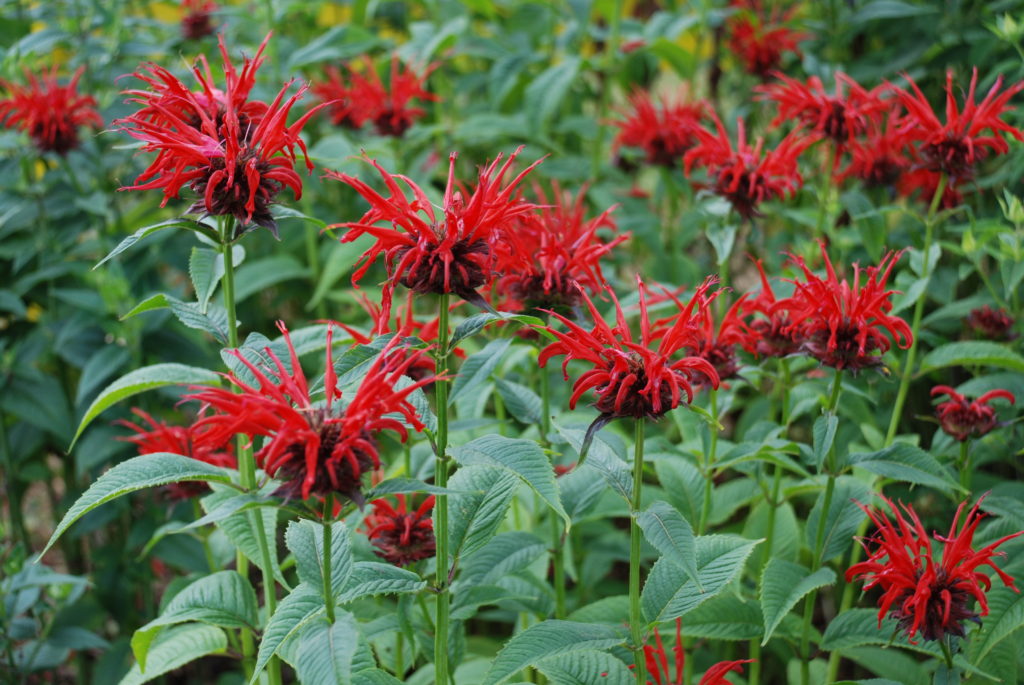
In 2016 Mt. Cuba Center in Greenville DE enlisted a team of trained volunteers to monitor the visitation of hummingbirds, moths, and butterflies in the 40 cultivar beebalm (Monarda) trial. Their goal was to systematically observe and note the cultivars that were most frequently visited by these pollinators. Below is a listing of the five most-visited selections by hummingbirds and moths/butterflies.
MT Cuba plant scientists report: “One of the first things we learned from this data is that hummingbirds visit large-flowered, red cultivars almost to the exclusion of everything else. This is most likely due to the fact that hummingbirds require a larger flower size in order to access the nectar. Despite the floral similarities among the hummingbird-visited selections, ‘Jacob Cline’ was much more favored than any other cultivar.
They report: “It is hard to pinpoint an exact cause, but one possible explanation may be that ‘Jacob Cline’ is the tallest of these cultivars and therefore may be easier for the hummingbirds to visit. Just as hummingbirds favored a certain type of flower, so too did moths and butterflies. They were most frequently observed visiting selections that produced the largest abundance of 2-3 inch wide flowers.”
Beebalm (Monarda) Varieties Attract Hummingbirds, Butterflies And Moths The data demonstrate that there are horticulturally desirable characteristics of cultivars (i.e. improved flower production and longer bloom times) that can have a positive impact on ecological function. For example, M. fistulosa ‘Claire Grace’ is a top performer horticulturally as well as a favorite among moths and butterflies.
Attracting Hummingbirds
1. M. didyma ‘Jacob Cline’
2. M. ‘Gardenview Scarlet’
3. M. ‘Cambridge Scarlet’
4. M. didyma
5. M. ‘Raspberry Wine’
Moth/Butterfly
1. M. fistulosa ‘Claire Grace’
2. M. ‘On Parade’
3. M. ‘Violet Queen’
4. M. ‘Peter’s Purple’
5. M. ‘Colrain Red’
Caveat: you should not conclude from a one year study that 2 or 3 varieties were the best. Hummingbird and insect activity may vary with the choice of varieties and the summer time period. Beebalms are also able to support an incredible number of bee and wasp species.

 Posted in
Posted in 
